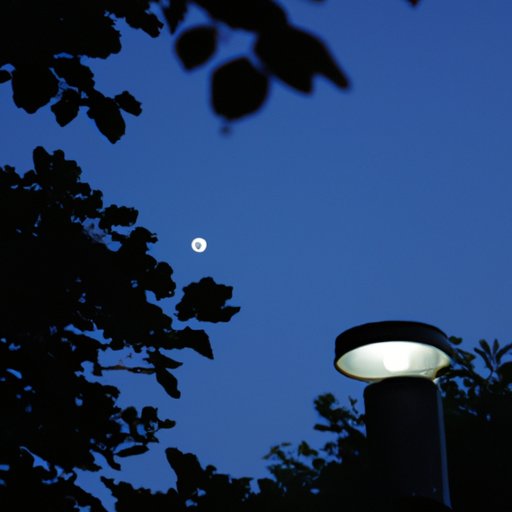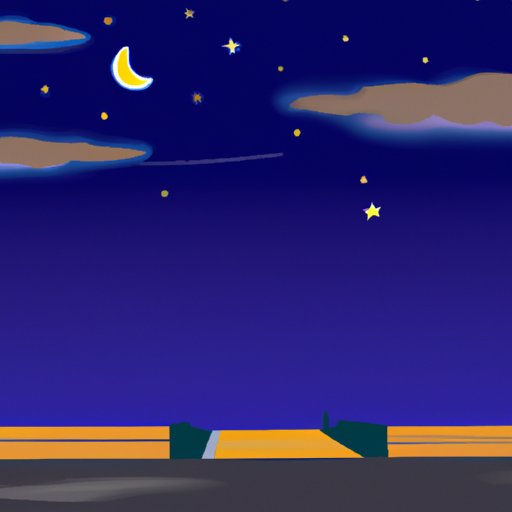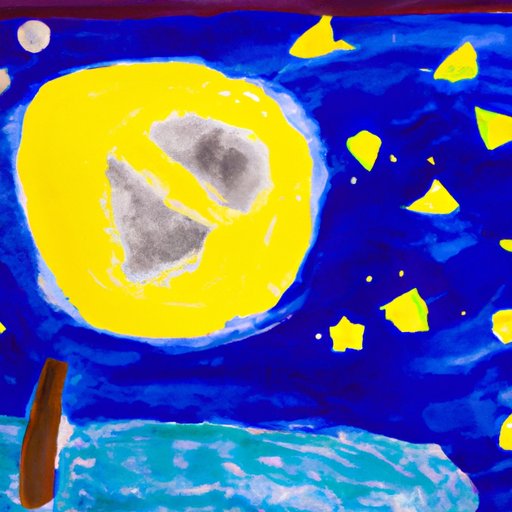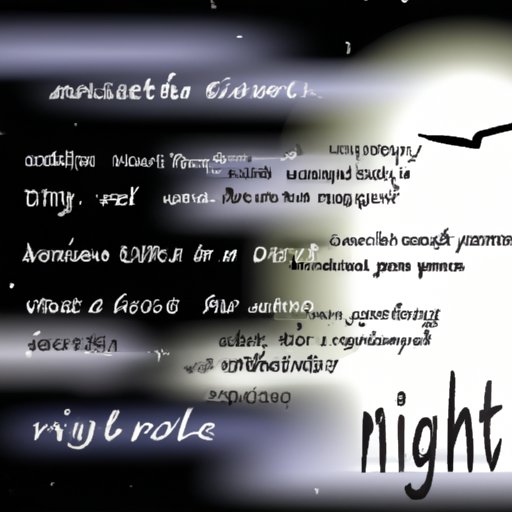Introduction
Writing about night time can be a challenge. It’s easy to rely on clichés or overused phrases, but if you want to create something truly special, you need to find a way to evoke emotion and capture the beauty of the night in words. In this article, we’ll explore ways to describe night time creative writing, from using descriptive language to create an image of the night, to painting a picture of a moonlit night through sensory language, to exploring the mystery of the night through dialogue.

Describe the Setting of a Summer Night in Detail
The first step in describing a night scene is to use descriptive language to create an image of the night. Think about the features of a summer night – the temperature, the smells, the sounds – and try to capture them in your writing. You could describe the warmth of the air, the smell of freshly cut grass, or the sound of crickets chirping in the distance. The more detailed and specific you are, the better.

Use Metaphors to Evoke Emotion when Describing the Night Sky
Metaphors are a great way to evoke emotion when describing the night sky. For example, you could say that the stars are “diamonds in the sky” or that the moon is a “lonely sentinel”. These metaphors help to create a mood and make the night sky come alive in the reader’s mind.

Create a Character and Write a Story Set Around Their Experience of the Night
Another way to bring the night alive is to create a character and write a story set around their experience of the night. When creating your character, think about their background, their personality, and their goals. Then, as you write the story, focus on how the character interacts with the night – what do they see, hear, feel? How does the night affect them emotionally? This will help to bring the night alive in your writing.

Paint a Picture of a Moonlit Night Through Sensory Language
Sensory language is another powerful tool for capturing the beauty of the night. Use words that evoke sight, sound, smell, taste, and touch to help readers imagine what it’s like to be in the middle of a moonlit night. You could describe the silver light of the moon, the rustle of leaves in the wind, the sweet scent of jasmine, or the coolness of the night air. All of these details will help to paint a vivid picture of the night.
Explore the Mystery of the Night Through Dialogue
Dialogue is a great way to explore the mystery of the night. You can use conversations between characters to hint at secrets and explore themes such as fear, loneliness, and the unknown. Try to keep the dialogue natural and realistic, so that the reader feels like they’re eavesdropping on a real conversation. This will help to create an atmosphere of suspense and intrigue.
Discuss the Symbolism of Night in Literature
The symbolism of night has been used in literature for centuries. From Shakespeare’s “To be or not to be” soliloquy in Hamlet, to Emily Bronte’s description of the moors in Wuthering Heights, authors have used the darkness of the night to explore themes such as death, loss, and rebirth. By drawing on these literary works, you can add depth and meaning to your own writing.
Write a Poem about the Beauty of the Night
Finally, why not try your hand at writing a poem about the beauty of the night? Writing a poem is a great way to capture the beauty and mystery of the night in a few short lines. Start by thinking of a few words or images that evoke the night, then use those words to create a poetic piece that expresses your feelings about the night. You could also look at examples of existing poems to get some inspiration, such as Robert Frost’s “Stopping by Woods on a Snowy Evening” or William Wordsworth’s “The World Is Too Much With Us”.
Conclusion
Writing about night time can be tricky, but with the right approach, it can also be incredibly rewarding. In this article, we’ve explored ways to describe night time creative writing, from using descriptive language to create an image of the night, to painting a picture of a moonlit night through sensory language, to exploring the mystery of the night through dialogue. We’ve also discussed the symbolism of night in literature and offered tips on how to write a poem about the beauty of the night. With these tips and examples, you should now have the confidence to tackle any creative writing project involving night time.
(Note: Is this article not meeting your expectations? Do you have knowledge or insights to share? Unlock new opportunities and expand your reach by joining our authors team. Click Registration to join us and share your expertise with our readers.)
